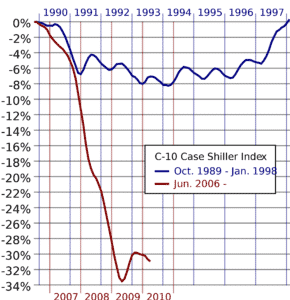Software development is a complex process requiring highly skilled professionals capable of developing quality software within a relatively brief period of time. The ability to develop and test software while adhering to a deadline certainly requires a great deal of talent, but it also requires the development team to utilize software development and testing strategies that result in peak efficiency and exceptionally effective processes. If you need help deciding on which tools are best, take a look at this comprehensive list of software testing tools from QASymphony.
When selecting a software development firm to complete a critical software project, the testing metrics utilized by the development team should play a role in the decision-making process. Software developers that employ metrics designed to ensure efficient and effective operations throughout the development process are more likely to produce the quality software you are looking for and are also more likely to do so in the time period requested.
The six testing metrics that follow are all incredibly useful in stimulating a greater degree of efficiency and effectiveness in a software development team, and understanding why each metric is important will help you ensure that the developer you work with is able to meet and exceed your lofty standards for quality software.
1. Software Testing Progress Curve
The test progress curve is a critical metric that measures the efficiency with which the test process is progressing. This particular metric is a raw measurement calculated by tracking the tasks necessary to complete the software development project, which is accomplished through a simple comparison of the total number of cases completed relative to the total number of cases attempted.
The curve that results from this metric allows those overseeing the testing component of software development to immediately recognize the areas in which the development team excels or struggles. This recognition makes it possible to make changes that enhance efficiency and ensure the software that is ultimately delivered is on time and of the highest quality level possible.
2. Testing Process Cost
It is critical to understand how your resources will be allocated throughout the software development process, and you certainly do not want to utilize your financial resources in a manner that is anything resembling wasteful or inefficient. The testing process cost metric demonstrates the cost of each phase of testing, including test setup, test reporting, and test execution, among several other critical software testing phases and components. Essentially, this metric will allow you to see just how efficiently your financial resources will be utilized, enabling you to determine the best way to use your funds on a specific software development project.
3. Defect Turnaround Time
 The defect turnaround time metric is another measure of software testing efficiency, as it measures the efficiency with which testers are able to identify defects. Using this metric during the software development process, testers can identify any defect and address it according to the relative urgency of the issue. Since this metric makes it possible to prioritize tasks according to urgency, the overall efficiency of the project is improved and the end product is far more likely to be delivered on time and according to the precise specifications you request.
The defect turnaround time metric is another measure of software testing efficiency, as it measures the efficiency with which testers are able to identify defects. Using this metric during the software development process, testers can identify any defect and address it according to the relative urgency of the issue. Since this metric makes it possible to prioritize tasks according to urgency, the overall efficiency of the project is improved and the end product is far more likely to be delivered on time and according to the precise specifications you request.
4. Operator Errors
Software development team leaders use the operator error metric to determine whether or not the error rates associated with the testing process are the result of the overall competency and expertise — or the lack thereof — of those working on the project. Software defects should be recognized and addressed during the testing process, so team leaders using the operator error metric can take steps to ensure their testing strategies are sound and that there are no skill gaps reducing the effectiveness of the software development team.
5. Test Coverage
Overall test coverage is an issue that must be addressed immediately if the coverage is lacking in some way. The test coverage metric compares the number of successful tests relative to the total number of tests that must still be completed, making it possible for development team leaders to immediately make changes to ensure the appropriate amount of test coverage is in place. When selecting a software developer to complete your project, knowing that they use this metric will provide peace of mind that all test cases, components, and configurations are being executed in the manner they should.
6. Defect Removal Efficiency
Identifying defects during the testing process is obviously important, but it is even more critical that software development teams are able to quickly resolve or remove these defects. With the use of the defect removal efficiency (DRE) metric, team leaders can see how efficiently team members are performing by comparing the total number of defects identified and resolved to the number of defects present in the end product.
The goal should always be 100 percent when it comes to DRE, especially since it is well known that this metric is often quite reflective of the overall quality of the final software product that is delivered to the client. When choosing a software developer for a critical project, it is in your best interest to recognize the importance of DRE as it relates to ensuring the software you receive meets the quality standards you expect.












